Marble architectures: the thousand faces of natural stone
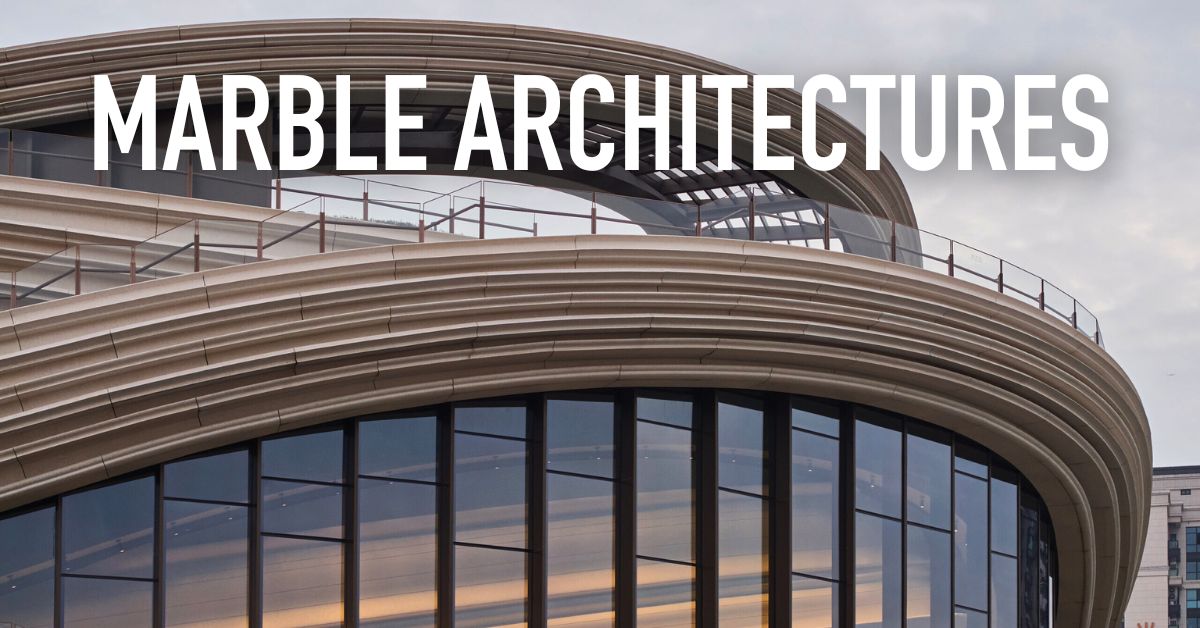
Marble, an unchanging and durable material, never ceases to amaze us with its ability to adapt to countless contexts and uses, and that’s also true in the field of architecture. From China to New York, let’s discover some marble architectures that have left us speechless with their magnificence and timeless, modern use of natural stone.
WEST BUND ORBIT – Shanghai, Cina
The West Bund Orbit is an exhibition space and cultural center, and it is part of Shanghai’s major redevelopment of the past decade. Heatherwick Studio and Wutopia Lab have collaborated on this massive work, with the latter focusing on the interiors.
From the outside, the structure looks like a large marble vortex, inspired by traditional Chinese moon bridges, but with a futuristic twist that makes it appear in constant motion, from which the interior, also made of marble, can already be glimpsed.
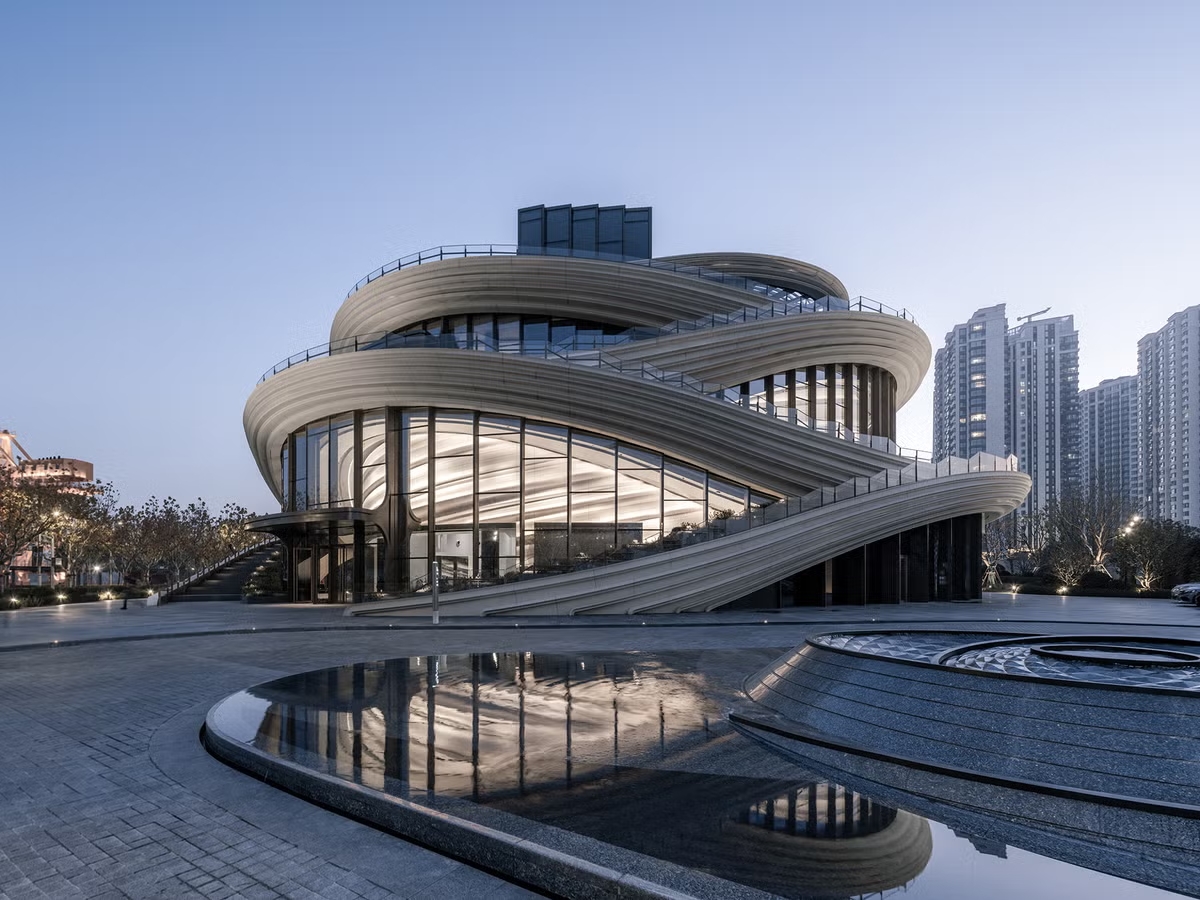
The interiors take up the pattern of the exterior walls, creating a succession of rooms around a main room. For example, the lobby, a welcoming space with circular shapes, or the dressing room, located in an underground floor inspired by the underwater world and created with green marble and coral-colored materials. Unusual forms, fine materials, and traditional Chinese culture and literature converge in this project, which fully embodies Shanghai’s changing and avant-garde spirit and deservedly ranks among the most interesting marble architectures of recent years.
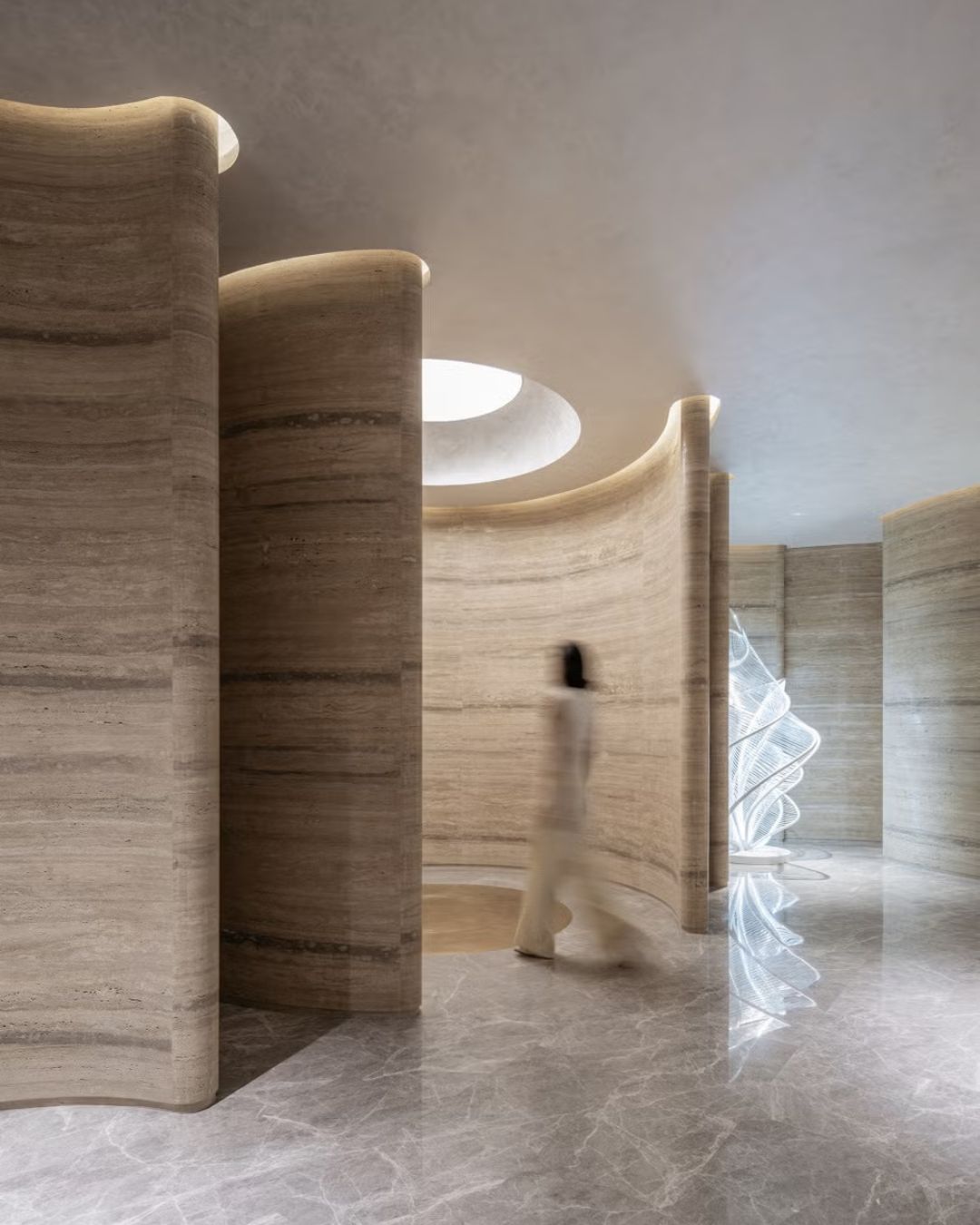
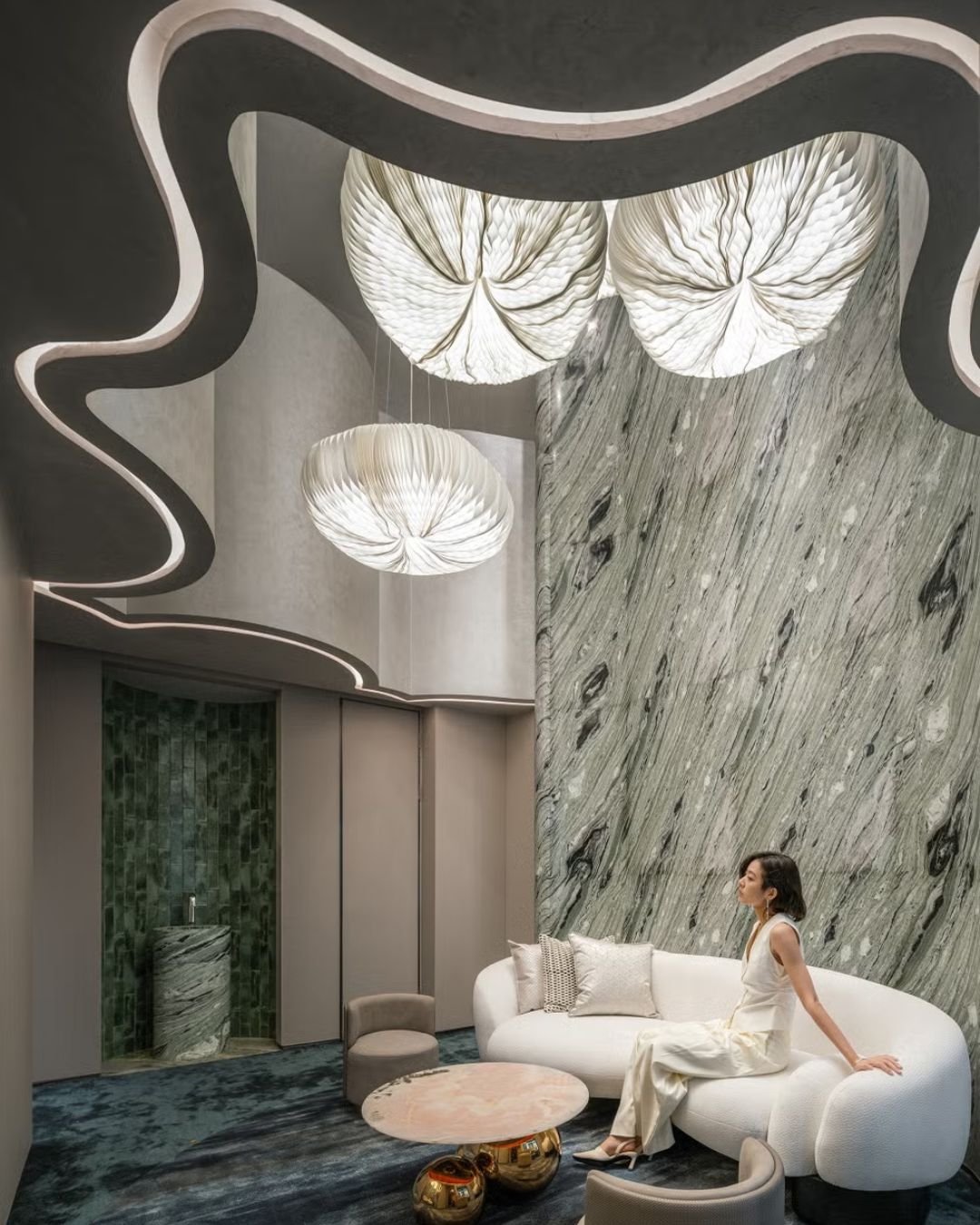
PERELMAN PERFORMING ARTS CENTER AT THE WORLD TRADE CENTER – New York, New York
Marble architecture transcends mere functionality to become a spokesperson for history, art and culture, and much more. In the heart of Manhattan, right next to the World Trade Center (of which it is also a part), stands the Rex-designed Perelman Center, a cubic structure clad in nearly 5,000 translucent veined Portuguese marble tiles, that respects the memorial dedicated to the buildings destroyed by the terrorist attack.
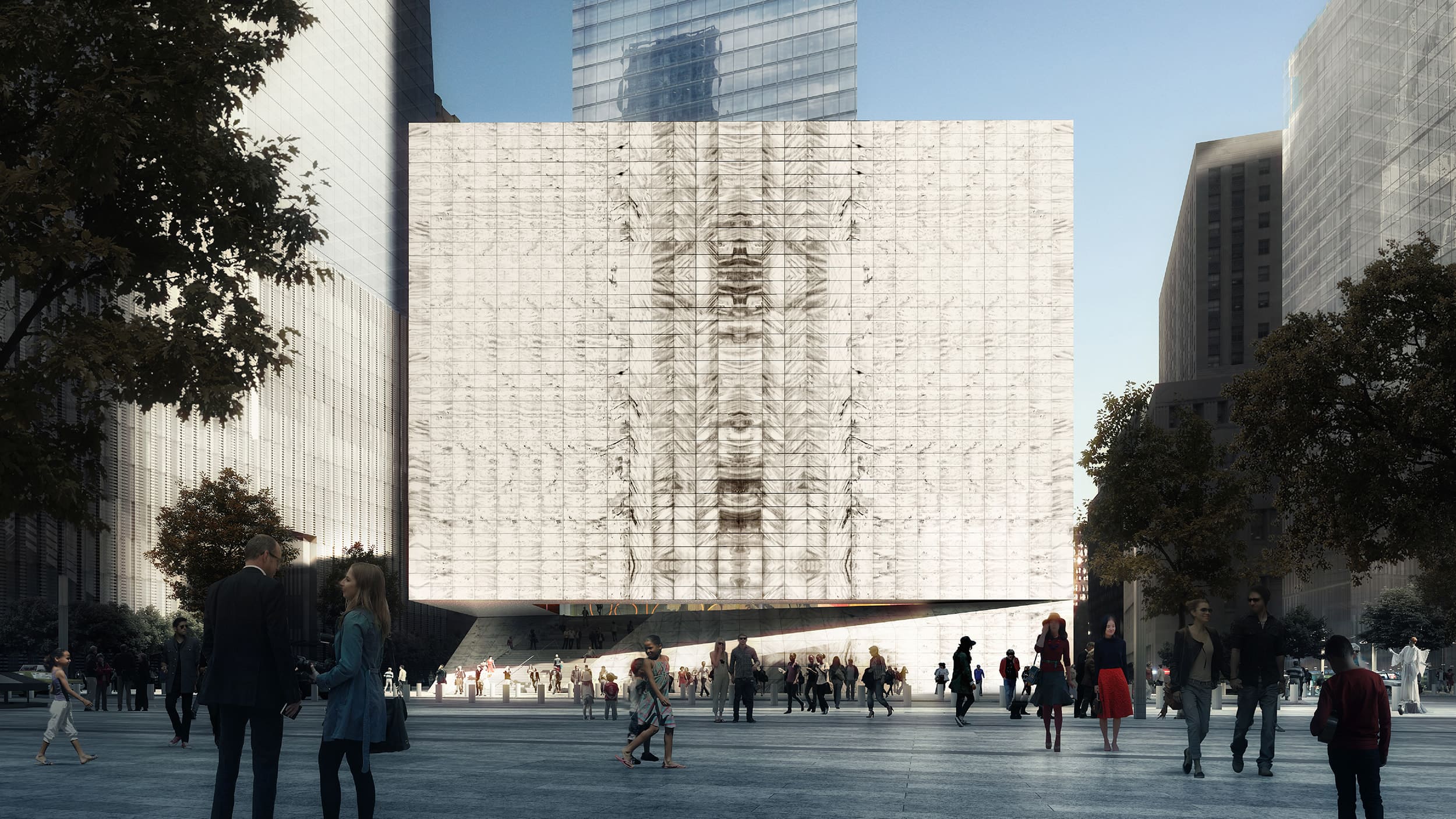
Lower Manhattan’s new performing arts center is a dynamic home for the arts, serving audiences and creators with flexible spaces that allow the facility to accommodate a wide range of arts programs.
The stone covering the structure, combined to create a biaxial symmetry pattern that is identical on all four sides of the building, is so thin that it allows light to pass through and hide what is happening inside. In this way, natural light is allowed to pass through during the day, while at night a lantern effect is created by the numerous LEDs, just as it happens in a back-lit panel. To better isolate the interior from the noise of the city and to prevent the sound of shows and performances from escaping, the marble slabs are enclosed between glass panels.
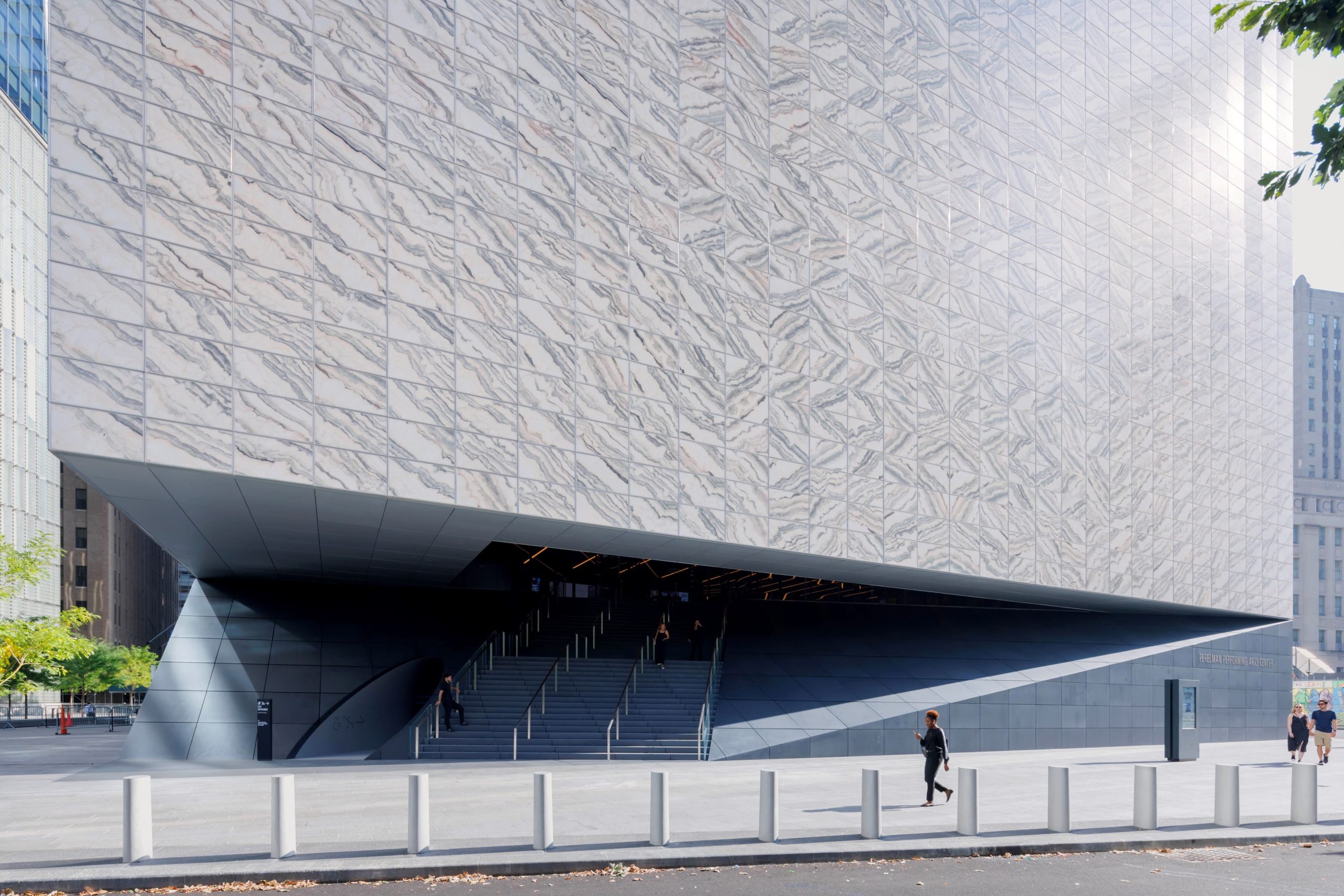
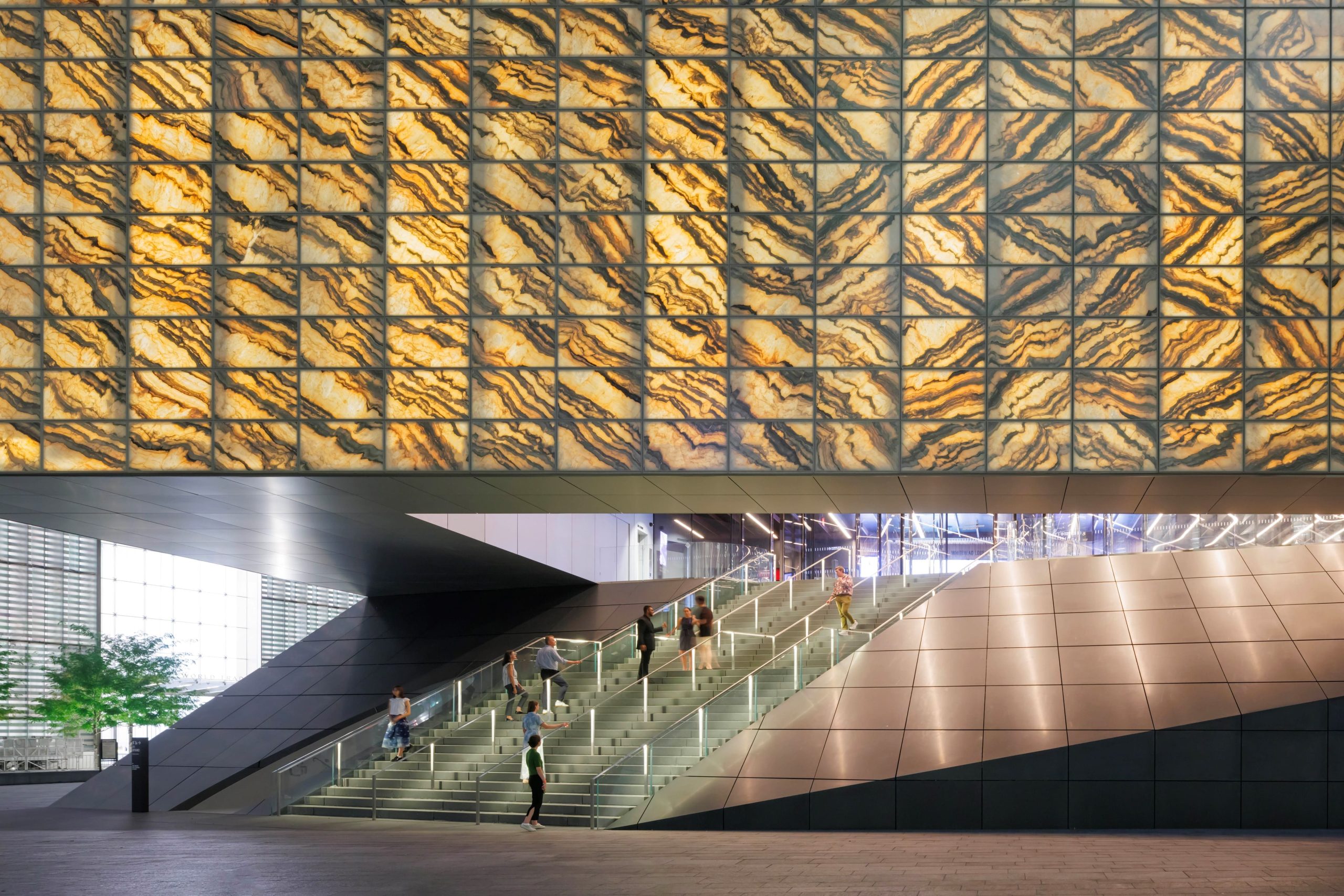
ATHLETIC PROPULSION LABS (APL) FLAGSHIP STORE – SoHo, New York, New York
Designed and built by British architecture firm Al-Jawad Pike, the second flagship store of sneaker brand Athletic Propulsion Labs in SoHo, New York is the last of the marble architectures featured today.
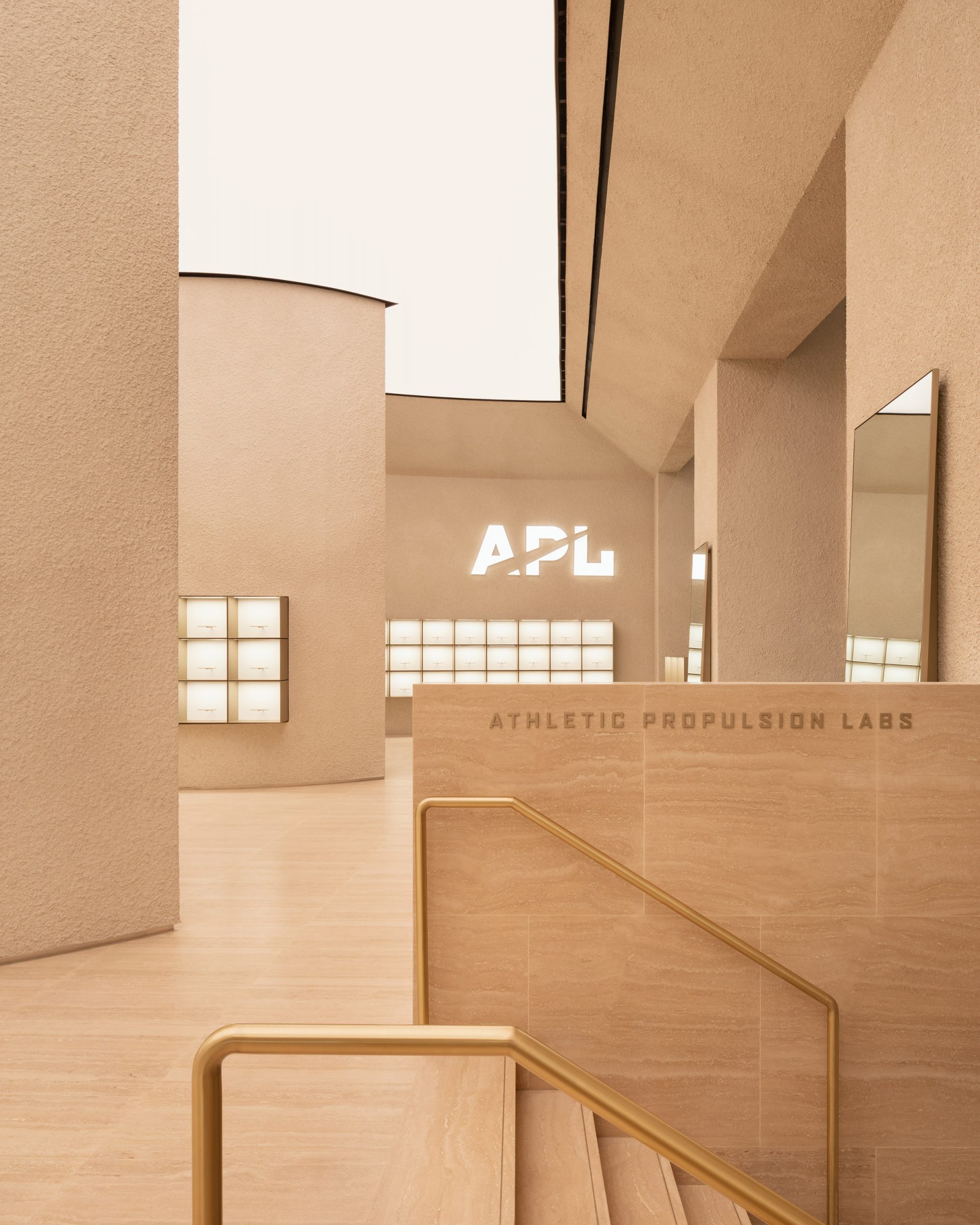
A true triumph of natural stone, the 1,200 square meter interior combines simplicity and austerity with the emotion of color to create a fully immersive experience.
The store’s centerpiece is five radially arranged vanity rooms, each clad in a different color of onyx or marble, with matching stone stools and backlit mirrors: a tribute to the city where the flagship store is located, representing New York’s five boroughs.
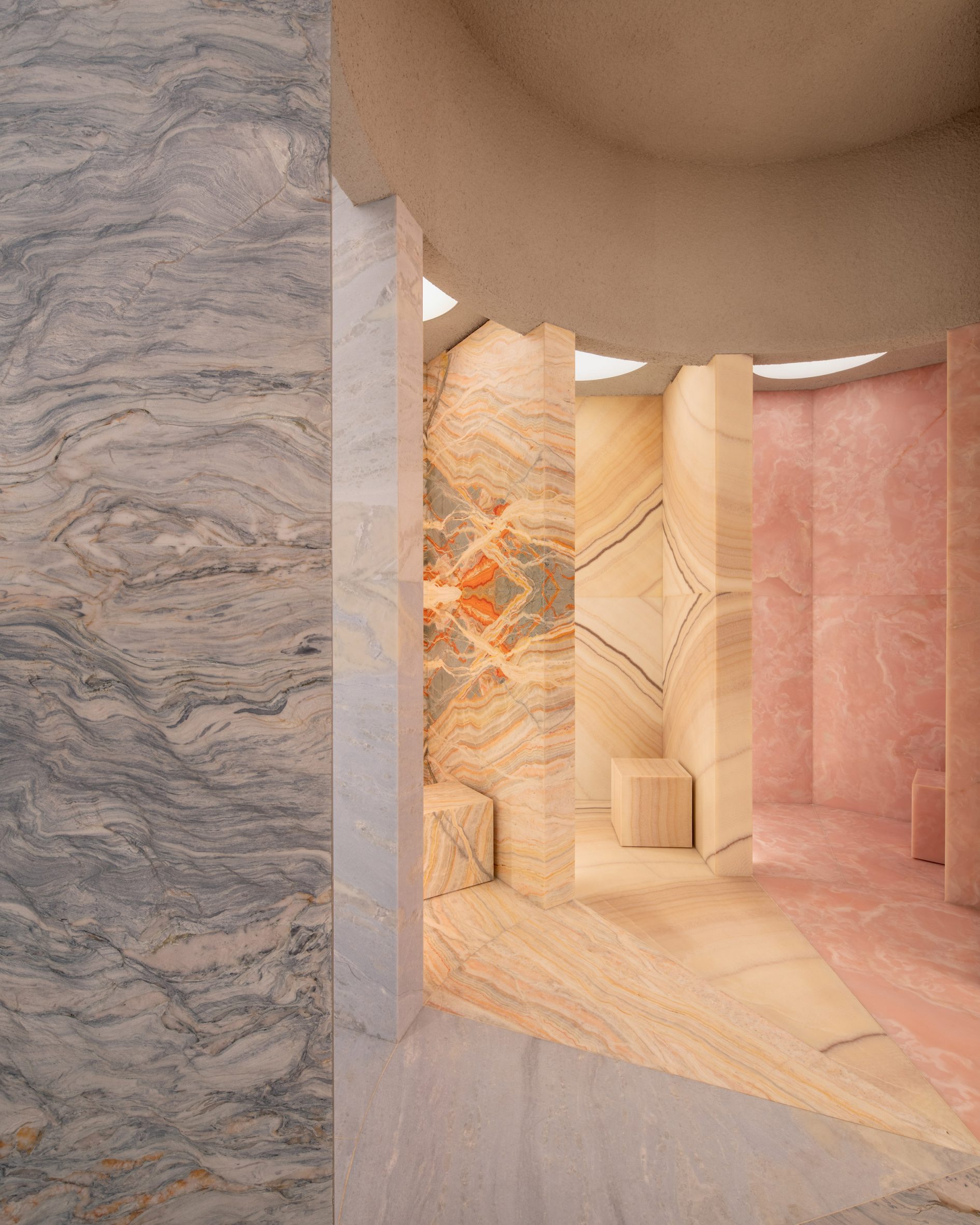
The entire showroom floor is covered in Roman travertin, a choice that makes the store warm and inviting.
Conceived as a curvilinear amphitheater, the structure of the environment is specifically designed to allow customers to see all the products from all parts of the store.
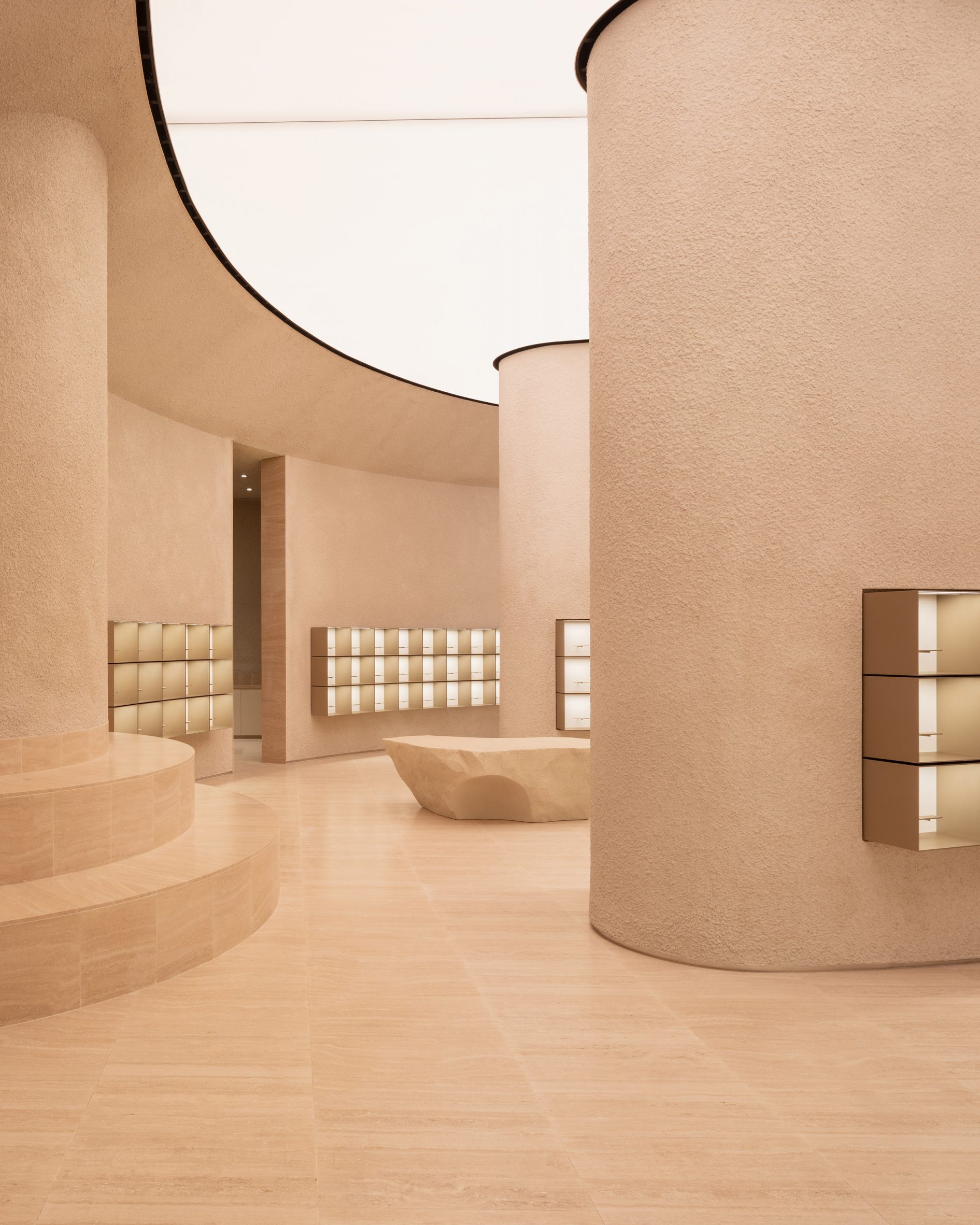
Which of these marble architectures do you think is your favorite? Leave a comment and let us know if you liked this article.


No Comments